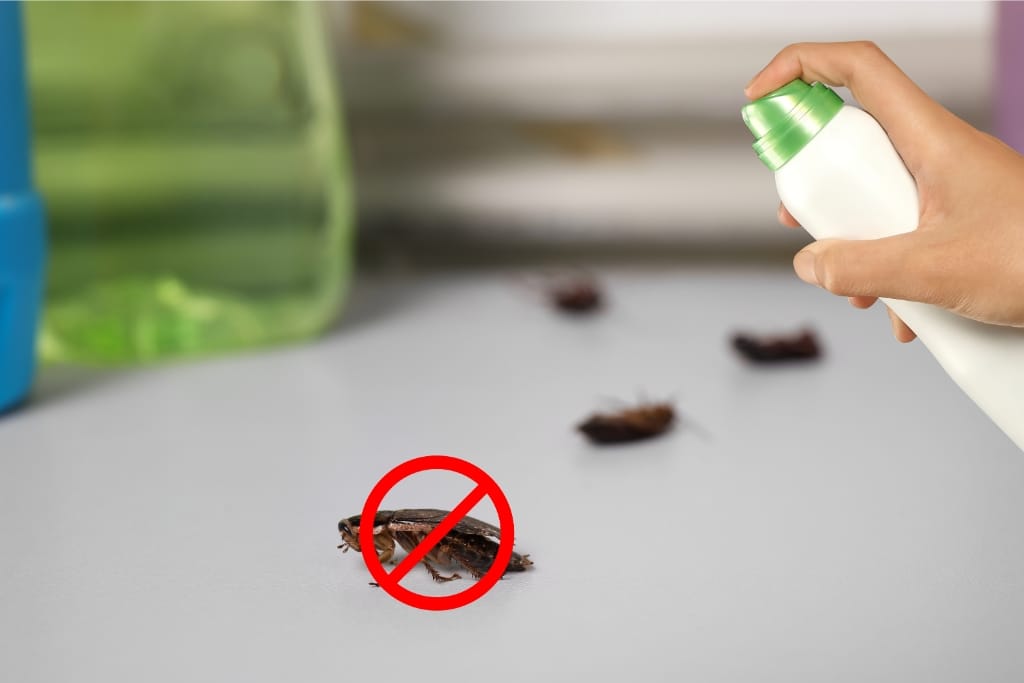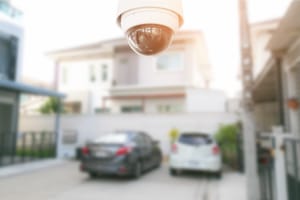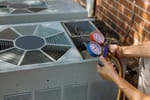In this quick guide, we unlock the secrets to effectively managing household pests through do-it-yourself methods that not only promise to save you money but also ensure a safer, pest-free living environment.
We'll walk you through identifying the invaders, selecting the most suitable treatment options, and meticulously applying these solutions—all to restore peace and comfort to your home.
Armed with knowledge and the right techniques, you'll be well-equipped to tackle any pest problem head-on, avoiding the costs and hassles associated with professional extermination services.
Whether you're dealing with a seasonal infestation or a persistent pest presence, our guide offers a structured approach to reclaim your space safely and efficiently.
Taking the DIY route for pest control presents a plethora of advantages, chief among them being substantial cost savings.
By handling pest issues yourself, you eliminate the professional service fees that can quickly accumulate.
DIY pest control empowers homeowners with the knowledge and skills to prevent future infestations, promoting a more proactive approach to maintaining a pest-free environment.
This method also allows for greater flexibility in choosing treatments that are less toxic and more environmentally friendly, ensuring the health and safety of household occupants and pets.
Engaging in DIY pest control not only keeps your home free from unwanted guests but also contributes to a deeper understanding of your living space and how to protect it.
Regular maintenance is the backbone of effective pest control, acting as both a preventative measure and a method of early detection.
By consistently inspecting your home for signs of pests and addressing potential entry points, you significantly reduce the likelihood of infestation.
This ongoing vigilance helps identify issues before they escalate into larger problems, saving time, money, and effort in the long run.
Furthermore, regular maintenance ensures that your home remains a safe and healthy environment, free from the damage and health risks associated with pests.
Achieving and maintaining a pest-free home is a continuous process that requires diligence and a commitment to regular checks and upkeep.
Before diving into any do-it-yourself pest control efforts, it's crucial to prioritize safety and preparation.
First and foremost, accurately identifying the pest ensures that the chosen treatment is effective and not unnecessarily harmful to the environment or non-target species.
Always read and follow the label instructions on any chemical treatments to avoid mishandling that could pose risks to health or property.
Wearing protective gear, such as gloves and masks, guards against potential hazards.
Considering the presence of children, pets, and plants in the area is vital, as they may require special precautions.
Lastly, ensuring that food items and personal belongings are securely covered or removed from the treatment area minimizes the risk of contamination, setting the stage for a safe and successful DIY pest control project.
Step 1: Identification of Pests
The first and arguably most critical step in your DIY pest control adventure is accurately pinpointing the pests that have taken up residence in your home.
This stage is foundational, as the effectiveness of your entire pest management strategy hinges on your ability to correctly identify the intruders.
Misidentification can not only lead to ineffective treatment but may also exacerbate the problem.
Hence, we will guide you through the best practices for researching and recognizing common household pests, techniques to accurately detect the specific type troubling your sanctuary, and resources that can assist in confirming your suspicions.
Armed with the right knowledge, you'll be well on your way to devising a targeted and effective pest control plan.
Research And Identification Of Common Household Pests
Researching and identifying common household pests is a crucial step that requires attention to detail and patience.
Familiarizing yourself with the characteristics, habits, and preferences of various pests such as ants, roaches, rodents, and termites can greatly improve your ability to identify them accurately.
Utilizing reputable online resources, consulting pest control professionals for advice, and even investing in guides or apps dedicated to pest identification can provide valuable support.
Clear, close-up photographs of the pests, along with observations of any damage or signs they have left behind, are instrumental in making an accurate identification.
This knowledge not only aids in selecting the appropriate treatment methods but also in implementing preventative measures to deter future infestations.
Techniques For Identifying The Specific Pest Problem
Identifying the specific pest problem in your home involves a blend of keen observation and strategic investigation.
Start by examining the most common signs of pests, such as droppings, marks, or structural damage to your property.
Not all pests are visible to the naked eye, so it’s important to pay attention to indirect signs of their presence.
For instance, noises within walls can indicate rodents, while fine sawdust trails might point to termites.
Employing monitoring tools like glue boards can help capture elusive pests, offering a clear indication of what you’re dealing with.
Consider the location and condition of the evidence, as some pests are known to favor certain environments over others.
This comprehensive approach allows you to accurately identify the pest problem, thereby choosing the most effective treatment strategy.
Utilizing Resources For Accurate Pest Identification
Utilizing a variety of resources is essential for accurate pest identification, a crucial step before implementing any control measures.
The internet offers a wealth of information, including university extension services and professional pest control websites that provide detailed pest profiles.
Engaging with local extension offices or pest control experts directly can also yield valuable insights, especially for region-specific pests.
Interactive online forums and social media groups dedicated to pest identification and control are another resource where individuals can share experiences and advice.
For those facing difficult-to-identify pests, submitting photos or samples to local university labs for professional identification might be necessary.
These varied resources, when used collectively, significantly enhance the accuracy of pest identification, ensuring that control efforts are effective and targeted.
Step 2: Choosing The Right Treatment Method
After accurately identifying the pest problem in your home, the next crucial step is selecting the right treatment method to effectively tackle the infestation.
This phase requires careful consideration of various factors, including the severity of the infestation, the safety of household members and pets, environmental impact, and cost-effectiveness.
Whether you're leaning towards chemical treatments, natural remedies, or mechanical traps, understanding the benefits and drawbacks of each approach is key.
In this section, we'll explore how to match your specific pest issue with the most appropriate and effective control tactics, ensuring that your DIY pest control efforts are both safe and successful.
Overview Of Chemical And Natural Treatment Options
Exploring both chemical and natural treatment options is integral to devising a comprehensive pest control strategy.
Chemical treatments, including insecticides and rodenticides, offer powerful and rapid results but must be used with caution to avoid potential harm to humans, pets, and the environment.
On the other hand, natural remedies, such as essential oils, and diatomaceous earth, and biological controls like introducing natural predators, provide safer, albeit sometimes slower, alternatives.
While chemical methods can be highly effective for severe infestations, natural treatments are often preferred for their minimal environmental impact and safety.
Balancing these options requires a thorough understanding of the specific pest problem, as well as consideration of the household’s health and ecological preferences.
Evaluating The Effectiveness Of Different Treatments
Evaluating the effectiveness and safety of different pest control treatments is a crucial aspect of managing household pests responsibly.
This involves considering the immediate and long-term effects of treatments on the health of occupants and pets, as well as their impact on the environment.
For example, while chemical treatments may provide quick eradication of pests, they may also pose risks such as toxicity to humans and animals or contribute to environmental pollution.
Conversely, natural treatments and mechanical traps are generally safer but may require more time to be effective.
Careful assessment of the pest situation, along with comprehensive research into the mechanisms and side effects of various treatments, enables homeowners to make informed decisions that balance effectiveness with safety.
It's also important to consider the resistance that pests might develop toward certain treatments over time, which could affect the long-term sustainability of the chosen method.
Making An Informed Decision On The Best Treatment
Making an informed decision on the best treatment approach requires weighing the pros and cons of each option in the context of your unique situation.
Consideration should be given to factors such as the severity and type of infestation, the safety of the inhabitants (including pets), environmental impact, and cost efficiency.
It's essential to conduct thorough research, possibly consulting with pest control professionals for their expert opinions, especially for severe or stubborn infestations.
Understanding the lifecycle and behavior of the pest can guide the timing and method of treatment for maximum effectiveness.
The chosen approach should not only aim to eradicate the current problem but also minimize the risk of future infestations, ensuring a long-term solution that aligns with the household's health and environmental values.
Step 3: Application And Monitoring
Once the best treatment approach has been identified, the next vital step is the application of the chosen pest control method, followed by diligent monitoring of its effectiveness and any potential side effects.
This phase is crucial, as it involves not only the correct and safe deployment of the selected treatment but also the continuous observation of pest activity and treatment outcomes.
Proper application ensures that the treatment reaches its intended target, maximizing effectiveness while minimizing harm to non-target areas and species.
Meanwhile, consistent monitoring allows for the quick identification of any need for adjustments in strategy, including the possible reapplication of treatments or switching methods if resistance or inefficacy is observed.
This step underscores the importance of a proactive and responsive approach to pest management, ensuring the health and safety of the household and the environment.
Preparing The Area For Treatment
Preparing the area for treatment is a critical step in the pest control process, ensuring that the application of either chemical or natural remedies is as effective as possible while minimizing exposure and risks to the household.
This may involve cleaning the affected areas to remove food particles and clutter that attract pests, sealing off entry points to prevent further infestation, and relocating pets and children to safe zones to avoid contact with harmful substances.
For treatments requiring the application of chemicals, covering or removing food, utensils, and personal items reduces the risk of contamination.
Ventilating the area can help dissipate fumes and reduce odor, making the environment safer and more comfortable post-treatment.
Proper preparation not only enhances the effectiveness of the pest control measures but also protects the health and safety of the home's inhabitants.
Step-By-Step Application Of The Chosen Treatment Method
The step-by-step application of the chosen treatment method is a detailed process that requires meticulous planning and execution.
Initially, it involves understanding the specific instructions for the treatment, whether it's a chemical application, natural remedy, or mechanical trap placement.
Safety gear should be donned as necessary, such as gloves and masks, to protect against potential hazards.
The treatment is then applied carefully, targeting the infested areas while avoiding unnecessary exposure to uninfected zones.
For chemical treatments, this could mean precise spraying or bait placement; for natural remedies, careful distribution of substances like diatomaceous earth or essential oils.
Following application, the treated areas are left undisturbed for the recommended period to allow the treatment to work effectively.
Clear documentation of what was applied, where, and when, assists in monitoring effectiveness and planning future interventions if needed.
Monitoring The Effectiveness Of The Treatment
Monitoring the effectiveness of the pest control treatment and making necessary adjustments is an ongoing aspect of integrated pest management.
It involves regular checks of treated areas to assess the decline in pest activity and identify any signs of resurgence.
Keeping accurate records of treatment areas, methods used, and the timing of application is crucial for evaluating success and planning future actions.
If pests persist despite initial treatment, it may indicate the need for a different strategy or a more concentrated application.
It may also highlight potential resistance, underscoring the importance of rotating treatment methods or increasing habitat modifications to prevent future infestations.
This adaptive management approach ensures that pest control efforts remain effective over time, safeguarding the health and comfort of the household and minimizing environmental impact.
Conclusion
It's imperative to underscore the significance of each step undertaken.
Beginning with identifying the pest type and selecting an appropriate treatment method, through to the meticulous preparation of the area for treatment, and followed by the crucial steps of applying the treatment methodically and monitoring its effectiveness, each phase plays a vital role in ensuring the health and safety of your household while minimizing environmental harm.
These steps, when executed correctly and in concert, not only provide immediate relief from pest infestations but also lay the groundwork for preventing future occurrences.
The comprehensive approach outlined highlights the importance of a strategic and informed response to pest management, ensuring lasting solutions that safeguard both the home environment and its occupants.
To ensure ongoing pest management is effective, regular housekeeping and maintenance routines are crucial.
This includes sealing cracks and openings to deter entry, maintaining clean kitchen areas devoid of food particles that attract pests, and managing waste and standing water that can offer breeding grounds.
Landscaping and garden maintenance can prevent the establishment of pest habitats near living areas.
Regular inspections of potential hot spots for pest activity help in early detection, reducing the need for extensive treatments.
Employing preventative measures, such as natural deterrents or chemical barriers, can also mitigate the risk of infestation.
Finally, staying informed about pest behavior and management strategies enhances the ability to respond promptly and effectively to potential threats, ensuring a healthier and safer home environment.
While taking on pest control as a DIY project can be rewarding and educate homeowners about the intricacies of their living spaces, recognizing when to call in professionals is equally important.
Starting with prevention and simple treatments, DIY endeavors can effectively manage many common pest issues.
However, encountering persistent infestations, hazardous situations, or pests that pose health risks warrants expert assessment and intervention.
Rather than viewing this as a setback, homeowners should see the collaboration with pest control professionals as a learning opportunity to enhance their preventative practices.
Remember, the goal is to maintain a safe and comfortable home environment, and knowing when to leverage professional help is a testament to responsible homeownership.
Related Articles and Guides
- How To Get Rid Of Ants In The Kitchen
- How To Get Rid Of House Roaches
- How To Get Rid Of Rats Without Harming Pets
Download Our Free E-book!








